
Veterans play a major role in the American business community. Despite the challenges they face during and after service, veteran entrepreneurs across the country are growing successful businesses in a wide range of industries.
According to the Small Business Administration, approximately 9% of all firms in America’s top 10 industries are owned by veterans. In total, these veteran-owned firms employ about 5.8 million people throughout the country.
If you’re a veteran starting your own business, several aspects of planning and development must be handled differently. One of the most unique considerations for veteran-owned firms in all industries is branding.
Veteran-owned businesses can use branding to explain their origins, communicate their values, and distinguish themselves from their competitors. To build a clearly defined brand identity, you must understand the brand development process and how branding relates to your unique message and goals.
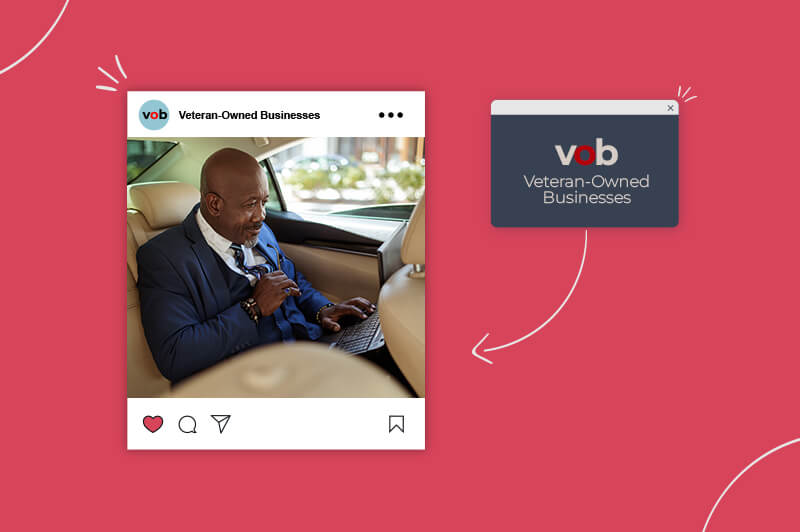
According to the American Marketing Association, “A brand is a name, term, design, symbol, or any other feature that identifies one seller’s goods or services as distinct from those of other sellers.”
Businesses can use their brand to gain recognition and engage with their target audience. Establishing a well-respected brand for your business can build long-term customer loyalty and directly increase the value of your products or services by adding brand equity.
For veteran-owned businesses, branding is an excellent way to highlight what makes them different from their industry competitors. Many Americans want to support veteran-owned businesses, but don’t have time to research every brand they buy.
By employing the right branding strategies, you can showcase your unique status as a veteran to a wider audience and reach consumers who share your values. That said, many businesses are different, and it’s critical for any veteran-owned firm to develop a customized branding strategy that matches its needs and goals.
To build a successful brand for any type of business, it’s critical to develop a carefully researched branding strategy. A brand strategy helps businesses define who they are and map out a path to their long-term goals.
Your brand strategy will depend on your business’s plan for growth and desired public image. Veteran-owned businesses often have unique branding considerations, and you should take the when developing a brand strategy.
One of the most pressing decisions that all veteran business owners must make is how to feature their VOB status in their company’s branding. Being widely recognized as a veteran-owned business can attract support and build customer loyalty, but your branding must address the subject in a way that aligns with your values and resonates with your audience.
There are several different ways your business can highlight your status through branding. In many cases, businesses will display their status by featuring the words ‘veteran-owned’ on their website or storefront. If you advertise online or in print, you can also include this message in your promo content, such as sponsored posts and banner ads.
As a veteran entrepreneur, you can also use promotions to illustrate your story and values, such as by offering discounts to other veterans and their families. These simple strategies can set your business apart without limiting the potential audience for your brand.
Some veteran-owned businesses, like the Black Rifle Coffee Company, will take it a step further.
They incorporate a distinctly military aesthetic into all the visual elements of their branding, including their logo, website, and product packaging.
For Black Rifle, the result of this approach is a logo that resembles the crosshairs of a rifle and packaging that features depictions of assault rifles and grenades.
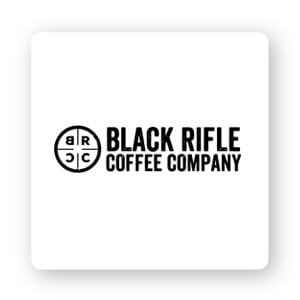
A strategy like this can help your brand stand out and add niche appeal, but it may cause your business to become associated with a particular political stance, which can alienate audiences. Ultimately, the ideal path for your brand depends on the values and demographics of your target audience(s).
One of the most effective ways for a business to develop its branding strategy is by creating customer personas for its target audience. Customer personas, or buyer personas, are detailed profiles of a brand’s customers.
Customer personas typically include a range of demographic and personal info designed to help identify an audience’s shared values and common pain points. Persona attributes could be things like age, location, income, occupation, hobbies, and professional goals.
Well-researched customer personas can help guide key marketing decisions like ad placement, and ensure that your branding strategy speaks to your target audience. Veteran-owned businesses can use these profiles to define their goals and determine the best way to tell customers their stories.
Mission and vision statements are both essential tools for developing a brand strategy. These statements help you create a clear path to their business goals. And also tells you customers what your company values.
While they’re easy to confuse, each of these statements addresses different types of organizational goals, and each has its own role in directing growth. New veteran-owned businesses need to understand the differences between them:
A company’s mission statement represents the foundations of its business model. Mission statements answer straightforward questions that relate to the essential day-to-day operations of the business.
These include “what do we do?”, “who are our customers?”, and “how do we benefit employees and consumers?”. Especially for newer businesses, mission statements can guide internal operations and help communicate brand values to consumers.
A vision statement describes a company’s long-term objectives, and lays out how the organization plans to impact business and society in the future. Unlike mission statements, vision statements describe the broad goals that a business hopes to achieve over time. These goals could be to eliminate a societal problem or become the new standard in a particular industry.
A clearly defined, inspirational vision statement can motivate employees and help businesses engage their audience.
Mission statements and vision statements are hugely important to new businesses, both for creating a public image and growing our business. You can use them to guide your business toward goals and get consumers excited about your story. Over time, clear mission and vision statements can help your business establish and protect its brand identity.
The ultimate goal of developing a branding strategy for a new business is to eventually establish a clear brand identity. The term ‘brand identity’ describes the visual and textual elements of a company’s branding, such as their logo or the colors they use on their website.
Ideally, the elements of your business’s brand identity should be consistent with your marketing strategy, mission, and values. A strong brand identity can help your business spread its message, build trust with consumers, and divide itself from competitors.
New businesses often have difficulty achieving recognition, even among consumers who share their values. However, establishing a clear brand identity can mitigate this issue and help you reach your target audience effectively.
Your business can use its brand identity to tell your unique story and leave a positive impression on consumers without investing in expensive marketing campaigns. There are several important tools that you can use to build your company’s brand identity.
Federal certifications are a highly unique way for veteran-owned businesses to display their status through branding.
In a world of discerning consumers, federal certifications can help your business build credibility and authority. There are two main federal veteran status certifications available to small businesses:
SDVOSB: The Service-Disabled Veteran-owned Small Business (SDVOSB) certification is available through the Small Business Administration. For a business to qualify for the certification, management, daily operations, and at least 51% of the business must be controlled by one or more service-disabled veterans, as defined by the Department of Defense.
Businesses with SDVOSB status are entitled to a percentage of prime government contracts each year per the Veteran’s Entrepreneurship and Small Business Development Act of 1999.
VOSB: The Veteran-owned Small Business (or VOSB) certification is a viable option for non-disabled veterans who don’t meet the requirements for SDVOSB. To qualify, management, daily operations, and at least 51% of the business must be controlled by military veterans.
Displaying a VOSB certification can help a small business build its audience and garner support from its community. Similar to SDVOSBs, Veteran-owned Small Businesses are prioritized for government contracts.
In addition to the federal government certifications, your veteran-owned business can earn certifications from third-party organizations that will further boost your business’s credibility and create more growth opportunities. There are two major veteran’s organizations that offer certifications for small businesses, and each has its own benefits:
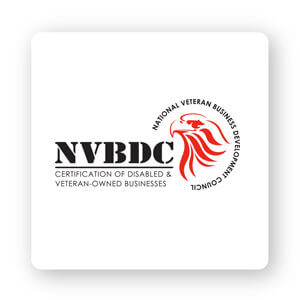
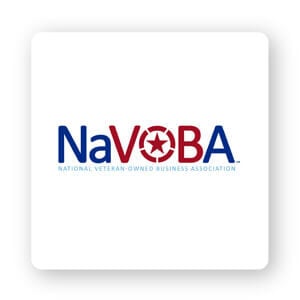
After they’re vetted, new members are added to a database of certified businesses. Because this database is used by the NVBDCs numerous corporate partners to find contractors and other service providers, obtaining an NVBDC certification can give your business access to lucrative new opportunities.
NaVOBA: The National Veteran-Owned Business Association (NaVOBA) administers its own certification programs for veteran and service-disabled veteran-owned businesses. Although this is a private-sector program that isn’t affiliated with the federal government, their certification requirements are based heavily on similar federal programs for disadvantaged businesses. Like the NVBDC, NaVOBA partners with a large group of trusted corporate affiliates that certified businesses can work with.

Another effective way that you can stand out as a veteran-owned business is through their logo design. When you’re developing a new business, the logo you choose has the critical job of visually representing your brand. A well-thought-out logo can convey your message to consumers and make your brand memorable.
There are several factors you should consider during the logo design process to ensure your brand is accurately represented:
Uniqueness: A unique logo is essential for gaining recognition as a new business. By using a unique logo design, you can easily show what makes your veteran-owned business different.
A truly distinctive logo should feature an original combination of visual elements that make its different from other brands. By using tools like the Tailor Brands Logo Maker, you can easily generate unique, high-quality logos without spending money on expensive graphic design services.
Relevance: The next crucial aspect of a good logo is relevance. When brainstorming logo ideas for a new business, you must keep your brand values, services, and target audience in mind.
All the main elements of your logo, from the color combinations to the types of fonts used, should be appealing to your audience and consistent with your brand identity. For example, if you want to cultivate an image of toughness and reliability, you should choose colors and fonts that symbolize strength and resilience.
Simplicity: Another important element for logo design is simplicity. Overly complex logos can confuse your brand’s message, and are more difficult for consumers to remember, especially when you’re a new businesses.
Focusing on your brand identity and avoiding superfluous visual elements during the design process will help ensure your logo is recognizable. A clean, streamlined logo can convey professionalism and give consumers faith in the authority of your brand.
Versatility: The next major factor for small business logo design is versatility. Modern businesses have a wide range of ways to advertise, from the internet to promotional gear. The exact guidelines for logo usage will vary depending on the medium, and certain formats (like mobile) may require your logo to be edited or resized.
The logo you create should be compatible with all the mediums you plan to use. Choosing a versatile logo can aid the success of your business’s marketing efforts and ensure your ability to grow smoothly.
Social media is an excellent way for new businesses to create and grow their brand identity, while reaching consumers for free (who doesn’t like free?). A strong social media presence allows you to build brand loyalty by engaging with consumers in a more personal way.
Through popular platforms like Facebook and Twitter, you can demonstrate your veteran-owned business’s values, engage with your audience, and glean insightful feedback from your customer base.
There are also several specialized social media platforms designed exclusively for veterans. These sites, like VetFriends and RallyPoint, were created to help veterans connect, look for employment, and advertise their businesses. By advertising on these specialty sites, you can target an audience that shares your values and supports your mission.
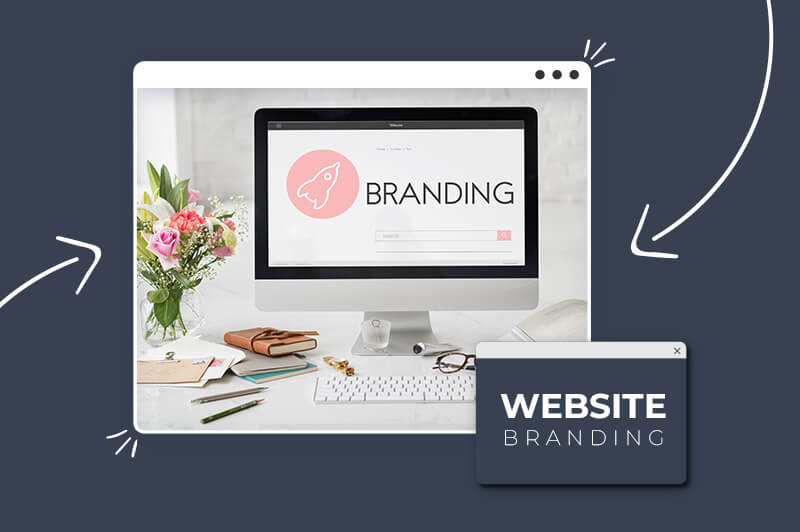
A business’s website is a primary component of its online presence. Through your website, customers can discover your brand’s origins, learn your values, and explore your products or services.
A great website should be consistent with your brand image and provide customers with all the information they need. To create a perfectly branded website for your business, you must include several key elements to keep it aligned with your brand identity:
Logo variations: There are several types of logo variations for businesses to use, including primary logos, secondary logos, and more simplified variants like icons and submarks. Including different versions of your logo throughout your website can lead to greater brand recognition. A balanced website will feature your logo variants in appropriate locations without overusing them.
Colors: The colors you use on your website should be consistent with your company image and the rest of your branding. Additionally, it’s important to use color combinations that are balanced and visually appealing.
Typefaces: The typefaces or font styles you use for your website should align visually with your branding and the rest of your website. In most cases, it’s beneficial to use different typefaces for different parts of your site. For example, a font that works well for a navigation menu may be too large to use for body copy.
Image styles: Images are a great way to capture your audience’s attention and tell your story on your website. The image formats, filters, and file types you choose should be conducive to your branding and the layout of your website. For example, a brand with a classic or retro aesthetic may want to utilize more black and white or sepia filtered images.
Graphic elements: Including a variety of graphic elements, such as animated logos or embedded videos, can make your website more exciting. When choosing the best graphic elements for your site, it’s essential to keep the sensibilities of your audience in mind. The graphic elements you choose should match your brand voice and the other visual aspects of your site.
When all these elements work together on your website, it helps your brand stand out and provides visitors with a more immersive experience. Veteran-owned businesses can attract support by using their website to display their status to consumers. Of course, the exact specifications of your website branding will depend on your target audience and desired image.
For more information about business development and assistance programs for veterans, check out these resources:
Veterans First Contracting Program: Created by the Department of Veterans Affairs to provide VOBs with increased networking opportunities.
Boots to Business: A program created by the Small Business Administration to help veterans transition from service to the business world.
GI Bill: Through the GI bill, the Department of Veterans Affairs offers entrepreneurial training and other educational resources to qualified veterans.
VAMBOA: The Veteran and Military Business Owners Association is a non-profit trade association to assist veteran-owned businesses.
Natasha Ivanovic is a Vancouver-born creative writer that started her writing career as a freelancer while studying for her Master’s in Investigative Psychology. On the weekends, she writes short stories for her blog, TheLonelySerb, and cuddles with her bulldog, Bob.
Products
Resources
@2024 Copyright Tailor Brands